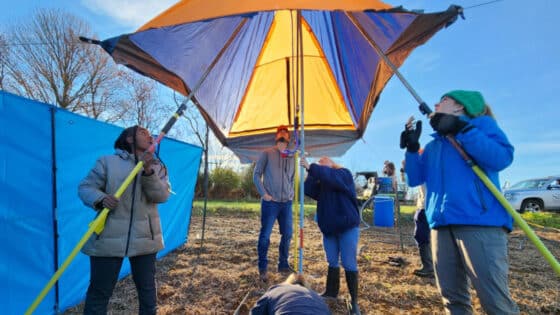Wu, M., L. Song, J. Ren, J. Kan, and P. Qian. 2004. Continental Shelf Research 24:1925–1934.
doi: 10.1016/j.csr.2004.06.016
Abstract
We have evaluated the feasibility of using the terminal restriction fragment length polymorphism (T-RFLP) pattern of polymerase chain reaction (PCR) amplified 16S rRNA sequences to track the changes of the free-living bacterial community for the Pearl River Estuary surface waters. The suitability of specific PCR primers, PCR bias induced by thermal cycles, and field-sampling volumes were critically evaluated in laboratory tests. We established a workable protocol and obtained TRF patterns that reflected the changes in the bacterial population. The temporal dynamics over a 24 h period were examined at one anchored station, as well as the spatial distribution pattern of the bacterial community at several stations, covering the transects along the river discharge direction and across the river plume. The TRF pattern revealed 9 dominant bacterial groups. Changes in their relative abundance reflecting the changes in the bacterial community composition were documented. Many culturable species were isolated from each field sample and a portion of the 16S rRNA gene for each species was sequenced. The species was identified based on sequence data comparison. In this region, the dominant species belong to the γ-subdivision of proteobacteria and the Bacillus/Clostridium group of Firmicutes. We also detected the wide spread distribution of Acinetobacter spp.; many of these species are known nosocomial pathogen for humans.


